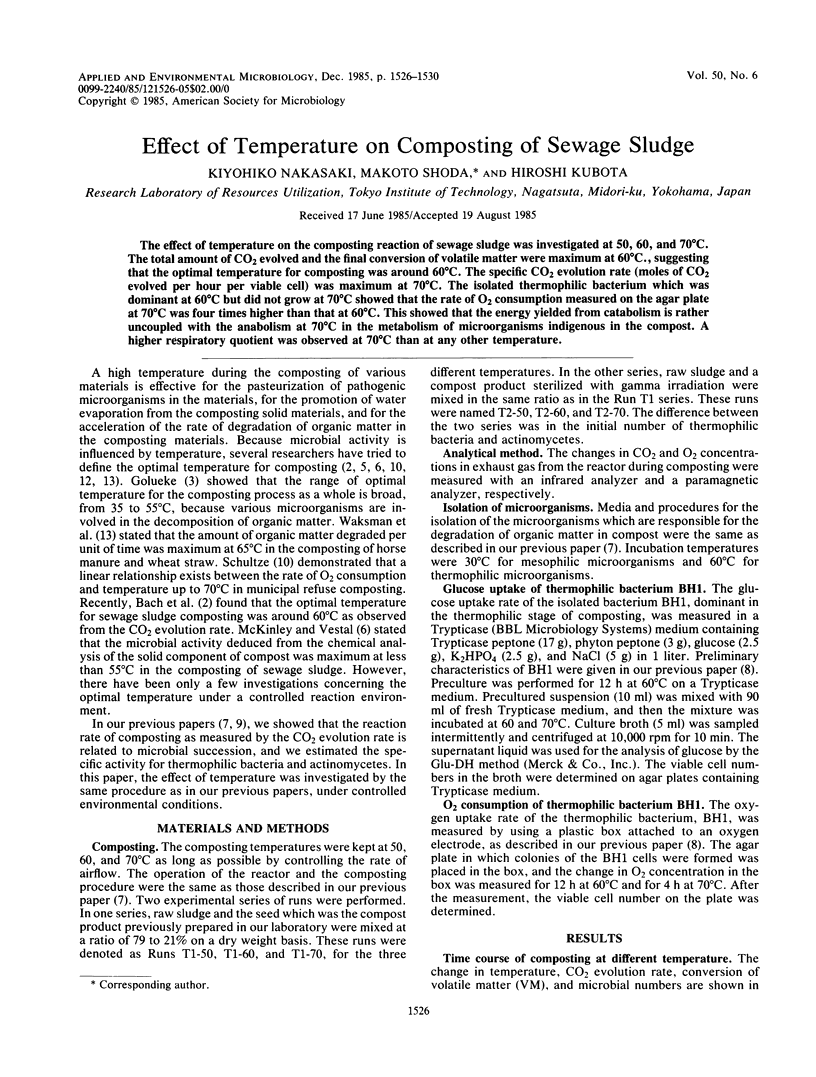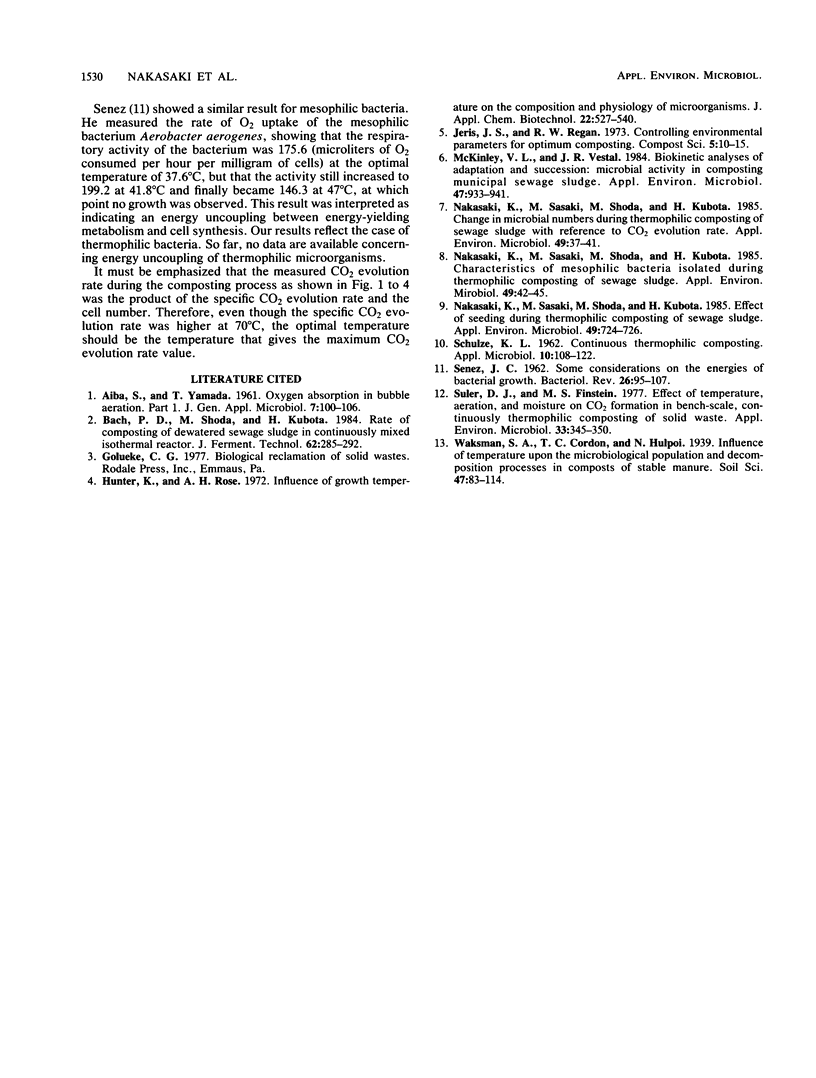Abstract
The effect of temperature on the composting reaction of sewage sludge was investigated at 50, 60, and 70°C. The total amount of CO2 evolved and the final conversion of volatile matter were maximum at 60°C., suggesting that the optimal temperature for composting was around 60°C. The specific CO2 evolution rate (moles of CO2 evolved per hour per viable cell) was maximum at 70°C. The isolated thermophilic bacterium which was dominant at 60°C but did not grow at 70°C showed that the rate of O2 consumption measured on the agar plate at 70°C was four times higher than that at 60°C. This showed that the energy yielded from catabolism is rather uncoupled with the anabolism at 70°C in the metabolism of microorganisms indigenous in the compost. A higher respiratory quotient was observed at 70°C than at any other temperature.
Full text
PDF




Selected References
These references are in PubMed. This may not be the complete list of references from this article.
- McKinley V. L., Vestal J. R. Biokinetic analyses of adaptation and succession: microbial activity in composting municipal sewage sludge. Appl Environ Microbiol. 1984 May;47(5):933–941. doi: 10.1128/aem.47.5.933-941.1984. [DOI] [PMC free article] [PubMed] [Google Scholar]
- Nakasaki K., Sasaki M., Shoda M., Kubota H. Change in Microbial Numbers during Thermophilic Composting of Sewage Sludge with Reference to CO(2) Evolution Rate. Appl Environ Microbiol. 1985 Jan;49(1):37–41. doi: 10.1128/aem.49.1.37-41.1985. [DOI] [PMC free article] [PubMed] [Google Scholar]
- Nakasaki K., Sasaki M., Shoda M., Kubota H. Characteristics of Mesophilic Bacteria Isolated during Thermophilic Composting of Sewage Sludge. Appl Environ Microbiol. 1985 Jan;49(1):42–45. doi: 10.1128/aem.49.1.42-45.1985. [DOI] [PMC free article] [PubMed] [Google Scholar]
- Nakasaki K., Sasaki M., Shoda M., Kubota H. Effect of seeding during thermophilic composting of sewage sludge. Appl Environ Microbiol. 1985 Mar;49(3):724–726. doi: 10.1128/aem.49.3.724-726.1985. [DOI] [PMC free article] [PubMed] [Google Scholar]
- SCHULZE K. L. Continuous thermophilic composting. Appl Microbiol. 1962 Mar;10:108–122. doi: 10.1128/am.10.2.108-122.1962. [DOI] [PMC free article] [PubMed] [Google Scholar]
- SENEZ J. C. Some considerations on the energetics of bacterial growth. Bacteriol Rev. 1962 Jun;26:95–107. [PMC free article] [PubMed] [Google Scholar]
- Suler D. J., Finstein M. S. Effect of Temperature, Aeration, and Moisture on CO(2) Formation in Bench-Scale, Continuously Thermophilic Composting of Solid Waste. Appl Environ Microbiol. 1977 Feb;33(2):345–350. doi: 10.1128/aem.33.2.345-350.1977. [DOI] [PMC free article] [PubMed] [Google Scholar]


